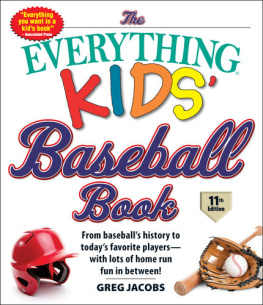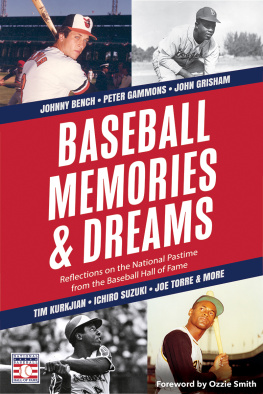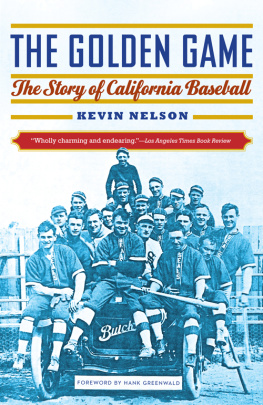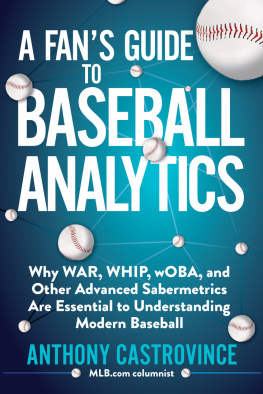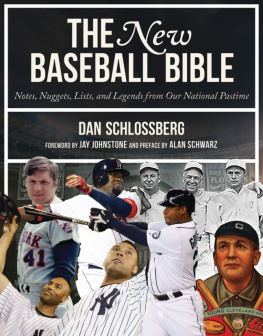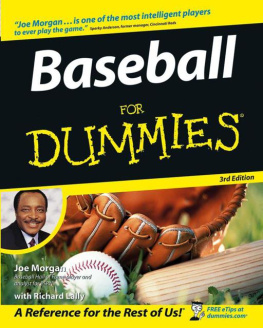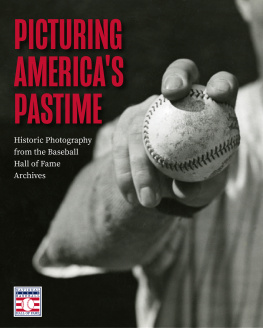Copyright 2016 by Kevin Reavy and Ryan Spaeder
All rights reserved. No part of this book may be reproduced in any manner without the express written consent of the publisher, except in the case of brief excerpts in critical reviews or articles. All inquiries should be addressed to Sports Publishing, 307 West 36th Street, 11th Floor, New York, NY 10018.
Sports Publishing books may be purchased in bulk at special discounts for sales promotion, corporate gifts, fund-raising, or educational purposes. Special editions can also be created to specifications. For details, contact the Special Sales Department, Sports Publishing, 307 West 36th Street, 11th Floor, New York, NY 10018 or .
Sports Publishing is a registered trademark of Skyhorse Publishing, Inc., a Delaware corporation.
Visit our website at www.sportspubbooks.com.
10 9 8 7 6 5 4 3 2 1
Library of Congress Cataloging-in-Publication Data is available on file.
Cover design by Tom Lau
Cover photo credit iStockphoto
ISBN: 978-1-61321-894-5
Ebook ISBN: 978-1-61321-895-2
Printed in the United States of America
TABLE OF CONTENTS

In Memoriam of the lone major leaguers who lost their lives serving in World War II, both Hall of Famers in our book:
1st Lt Harry ONeill (USMC), KIA March 6, 1945
Capt Elmer Gedeon (USAAF), KIA April 20, 1944
ACKNOWLEDGMENTS

Writing this book required the help, encouragement, and support of some really great people:
Sean Forman and Baseball-Reference.com, for helping casual fans and professional researchers alike see through the statistical looking glass of baseballs rich history. The Baseball-Reference play index really helps make this book possible.
Michael Kirk, for his mastery in finding, fixing, and fact-checking numerous aspects of this book along the way.
Julie Ganz, for what was surely an arduous task editing this book and directing our progress. We didnt make it easy, but shes always a pleasure to work with.
Wade Boggs, for his generosity, and tremendous foreword.
Amy McCormick, for her great work on the glossary and Rob Campbell for bringing two baseball nerds together to make this happen.
Also, a huge thank-you to the following for their invaluable assistance for this book and over the years:
Lyle Chip Chipperson, Kevin Durso, Peter Gammons, Dan Hirsch, Christopher Kamka, Jonah Keri, Frank Klose, Andrew Owens, Tim Raines, Matt Rappa, Mark Simon, Jayson Stark, Brian Startare, Ben Steffen, Lyndsay Taylor, Daren Willman, Nolan Ryans fastball, and the National Baseball Hall of Fame and Museum.
A note from Kevin: I would like to thank my familyCharlotte, Ed, Dave, Colleen, et al. Theyre the best. Also, a big thank-you to my friendsMike, Fitz, Jim, Teal, Tiff, Brad, Andrew, Aric, and Mary. Theyre ok. Finally, and most importantly, this book wouldnt be possible if I couldnt unwind after long writing sessions with wings and a pint at Franks American Pub, the Chester County Cheers.
A note from Ryan: Mom and Dadthank you for backing me in everything I do and all of the decisions I make; I love you. Georgie, Jenna, Carlie (aka Oh), and Jake(man), your support drives me. Finally, thank you to the everyone who follows me on Twitter. Without you, I am just a crazy person spouting off statistical nonsense.
FOREWORD

Wade Boggs played the game the right way. His skillset was often underappreciated throughout his career, as he caught the reputation as a Punch and Judy singles hitterbut he was so much more than that.
Wins above replacement (WAR), which is relied upon heavily today to measure a players overall contribution to his team, can only be applied to Wades career in retrospect. But when looking back on his prime seasons through sabermetric glasses, we can deduce that he was one of baseballs most valuable players. He led American League position players in WAR in 1986, 1987, and 1988 and was second in 1983, 1985, and 1989. Despite this, he never received a single first-place MVP vote.
Sabermetrics aside, Boggs was a decisive table setter for the Red Sox throughout his Boston tenure (198292), during which he maintained an on-base percentage of .428besting the American Leagues cumulative OBP by 100 points (.328). He reached base a major-leaguebest 3,124 times during that same period381 more than future Hall of Famer Tim Raines, who was secondand garnering a mere 470 strikeouts, which ranked 158th most.
Boggss ability to get on base was emphasized by his ability to hit for a high average. In fact, in just his 58th career MLB at-bat (65th overall plate appearance), he singled to center field off the Tigers Milt Wilcox, raising his lifetime batting average to .328a clip hed never drop below, all the way through to his final big league appearance with Tampa Bay on August 27, 1999.
Unlike Bostons greatest folk hero, Ted Williams, Boggs never batted .400 in a season; however, during his 162-game peakfrom June 9, 1985 to June 6, 1986he maintained a splendid .401 batting average.
Batting averagelong used as the key measurement of a players success at the plateis now merely a supporting statistic. Boggs played ahead of his time; he knew that getting on base was what mattered most. His new-school approach yielded a .415 on-base percentage, 16th best in baseball history among players with at least 7,000 plate appearances. Thats not to say that Boggss classic stats arent equally as impressive; he would have to return to baseball and go 0-for-854 for his career batting average to officially dip below .300.
T his year, the Boston Red Sox decided to retire my #26 jersey. What an honor, to have my number up there in right field at Fenway Park with some of the greatest to ever wear the uniform!
Its another tremendously satisfying reward for all the hard work and dedication I put into the game throughout my life. I like to think I played the game the right way.
Pete Rose was one of my favorite players growing up, and very well might be the poster boy for leaving it all out on the field. That Charlie Hustle persona rubbed off on me, and is everything I preach to the kids I coach at Wharton High School in Florida. Maximum effort and hustle on every play are two things that require zero athletic ability. Thats the kind of ballplayer Ive enjoyed watching, and thats something I hope to instill in the next generation of players, from Little League on up.
When I played, I always had a plan and tried my best. Statistics werent at the forefront of my mind, but I knew the stats would be there, if I did my job. Now, more than ever, baseball stats are celebrated and studied in a way that I think really honors the nuances of the game, and the little things that players, past and present, contribute to win games, and ultimately, the World Series.
I wish we had been able to bring home a World Series trophy for Boston during my tenure. Winning one with the Yankees in 1996 probably lost me a few fans, but I truly never wanted to leave Boston in the first place. Jean Yawkey, Sox owner during my career, had hopes that Id retire a Red Sox, with the likes of Ted Williams and Carl Yastrzemski, and I was thrilled at the thought. Sadly, Mrs. Yawkey, my biggest fan, passed away in 1992, and the front office simply didnt offer me a contract when I was granted free agency shortly thereafter. But Im proud of what I accomplished in Boston... and the same goes for New York, and Tampa Bay, where I still live.



